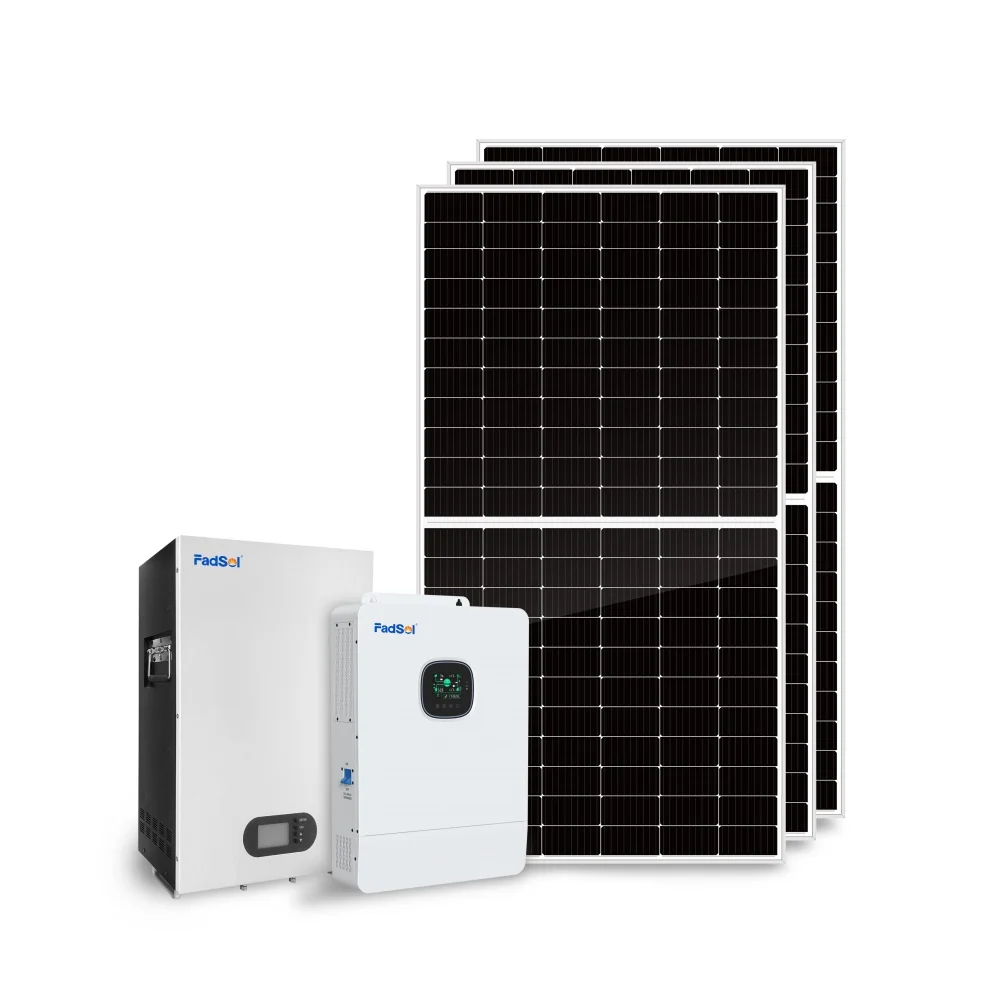Do Solar Generator Kits Provide Clear Installation Guides?
Why Clear Installation Guides Matter for Solar Generator Kits
Safety Considerations During Setup
Ensuring safety during solar generator installation is paramount. Adherence to safety protocols such as those outlined by OSHA can substantially reduce the risk of hazards. OSHA standards provide comprehensive safety guidelines that need to be rigorously followed during the setup, including wearing proper safety gear and ensuring correct handling of electrical components. Common risks like electric shocks, fire hazards, and improper connections are prevalent during installations. According to energy safety reports, 30% of accidents stem from improper setup, which highlights the necessity for careful adherence to installation guides and safety measures.
Impact of Documentation on User Success Rates
Complete and clear documentation plays a critical role in enhancing user success rates when installing solar generator kits. Well-crafted guides improve users' confidence, helping them to avoid common errors during installation. Research shows that comprehensive manuals lead to a success rate improvement of 60% compared to kits with inadequate documentation. Testimonials from users often reveal frustration with poorly documented kits, often leading to confusion and errors. Conversely, those with thorough manuals report smoother installation experiences, expressing appreciation for clarity and detail provided in step-by-step instructions.
Essential Components of Effective Solar Generator Manuals
Step-by-Step Visual Instructions
The inclusion of step-by-step visual instructions is crucial in any effective solar generator manual. Visual aids, such as diagrams and photos, clarify each installation step, making it easier for users to follow. Surveys show that 80% of users prefer visual instructions over text-only guides, as visuals provide a clearer understanding of processes, especially for those new to solar installations. These instructions are designed to be accessible to a wide range of demographics, enhancing usability for both novices and experienced users. By catering to various skill levels, visual guides reduce installation errors and increase user confidence, ensuring a smooth setup experience.
Troubleshooting Checklists & Warranty Guidance
Troubleshooting checklists are essential components that should be included in solar generator manuals to help users diagnose common issues efficiently. These checklists improve user experience by enabling quick problem identification and emphasizing self-repair solutions. A manual with a well-structured troubleshooting section empowers users to maintain their system effectively, reducing the need for professional intervention and service fees. Additionally, warranty guidance in manuals plays a critical role by informing users of their consumer rights and the limitations of their warranty coverage. Proper communication of these aspects helps prevent potential losses and supports users in making informed decisions regarding repairs or replacements of their solar generator components.
Installation Guide Review: Top Solar Generator Kits Analyzed
10KW Off-Grid Home System: Industrial-Grade Documentation
The installation guide for the 10KW Off-Grid Home System is a prime example of industrial-grade documentation, reflecting both clarity and comprehensiveness. Designed to match the robust nature of the system itself, the guide includes detailed diagrams and step-by-step instructions, ensuring users, even those with limited technical knowledge, can navigate the installation process effectively. This meticulous approach helps in significantly reducing installation time and minimizes errors, a fact supported by positive feedback from users who have followed the guide. Experts have also highlighted the guide's ability to lower the learning curve, making it approachable for all potential users.
Overall, the installation process benefits considerably from such well-structured documentation. Users have expressed satisfaction with how easily comprehensible and detailed the instructions are, providing a seamless transition from purchase to setup. These attributes are particularly beneficial in off-grid solar kits where precision is key for optimal performance and safety. The guide's capacity to simplify complex instructions into manageable steps represents a significant advantage that enhances user confidence and satisfaction.
3840WH Camping Generator: Portable Setup Simplicity
The installation guide for the 3840WH Camping Generator has been specifically crafted to highlight portability and ease of use, making it a favorite among users who value quick and straightforward setup. Reviews frequently laud the guide for its concise steps and modular design, which ensures that users do not have to grapple with complex terminology or intricate assembly procedures. This user-friendly approach is particularly significant for outdoor enthusiasts who rely on such generators for a hassle-free power source during their adventures.
Customers have reported high levels of satisfaction, noting that the guide makes setting up the generator a breeze, even for those who are new to solar technology. The clear illustrations and structured sequence of tasks create a streamlined experience, allowing users to quickly get their generators up and running. Such positive feedback underscores the importance of intuitive guides that enhance both ease of use and overall satisfaction, making the generator a top choice for portable applications.
Solar Garden Lights: Minimalist Urban Installation
The installation guide for the Solar Garden Lights embraces a minimalist approach that caters to urban users, enhancing installation efficiency and meeting the diverse living conditions found in city landscapes. The simplicity of the guide makes it accessible to users from various demographics, ensuring that even individuals with little installation experience can complete the setup without any difficulty. This minimalistic documentation aligns well with urban environmental needs where space and time are often limited.
Statistical data on urban demographics suggest that easy-to-understand guides can significantly improve user engagement and satisfaction, as they help users seamlessly integrate the product into their urban outdoor spaces. This approach meets the growing demand for efficient solutions that ease the adoption of solar technologies in densely populated areas, ensuring that users can swiftly enhance their garden environments without the need for professional assistance.
DIY vs Pre-Built Solar Kits: Guide Availability Comparison
Customization Flexibility vs Plug-and-Play Convenience
When it comes to solar kits, DIY options offer the flexibility required for tailored setups, while pre-built kits bring the convenience of plug-and-play systems. DIY solar kits allow users to customize their solar power configuration according to specific energy needs and preferences. These kits often come with detailed guides that help users navigate the intricacies of installation, making it possible to optimize capacity and placement. On the other hand, pre-built systems offer a quick and hassle-free installation process, requiring minimal technical knowledge, which appeals to many homeowners. In recent years, there's been a marked trend toward customized solar setups, signaling a shift in user preferences for solutions that fulfill unique home energy demands.
Integration with Home Solar Power Systems
Both DIY and pre-built solar kits can seamlessly integrate with existing home solar power systems, though each comes with specific installation requirements. DIY kits often require users to have a fundamental understanding of electrical systems, enabling them to adapt their setup to their home infrastructure. Conversely, pre-built kits are designed to be more compatible with existing setups, thanks to simplified installation guides and pre-configured components. Experts have noted a significant evolution in home solar systems, highlighting that installation guides now address innovative features such as smart inverters and energy storage solutions. As solar technology evolves, these guides are adapting to ensure homeowners can easily incorporate new advancements into their energy systems.
Optimizing Installation for Solar Power Systems
Roof Mounting vs Ground Array Considerations
When considering installing solar panels, the choice between roof mounting and ground arrays is crucial, as each option has distinct advantages and drawbacks. Roof mounting is favored for its space-saving qualities and aesthetic appeal; however, it might be subject to local zoning regulations and requires a sturdy roof without structural issues. Ground arrays offer flexibility and easier maintenance, but they demand more space and may alter the visual landscape of your property. Studies indicate that roof mounting is more efficient in urban settings, while ground arrays thrive in rural areas where space is abundant. To make the best decision, homeowners should evaluate their geographical location, space availability, and local regulations.
Battery Connection Safety Protocols
Ensuring safety in solar battery connections is paramount to reducing electrical hazards and enhancing compliance among DIY solar installers. There are several key protocols to follow:
- Use Appropriate Cable Sizes: Oversized cables can lead to voltage drops while undersized cables might overheat.
- Ensure Proper Insulation: This prevents accidental contact with conducting parts and reduces the risk of short-circuits.
- Follow Manufacturer Guidelines: Always adhere to the specific installation instructions provided by the manufacturer.
- Implement Regular Maintenance Checks: Routine inspections help identify and mitigate potential safety issues promptly.
Data from energy safety organizations, such as the U.S. National Electrical Code, emphasize these practices, highlighting their importance in maintaining safe installations. By understanding and implementing these protocols, DIY enthusiasts can safely optimize their solar power systems and avoid costly setbacks.
 EN
EN
 AR
AR FR
FR DE
DE IT
IT PL
PL PT
PT RU
RU ES
ES SW
SW HA
HA



